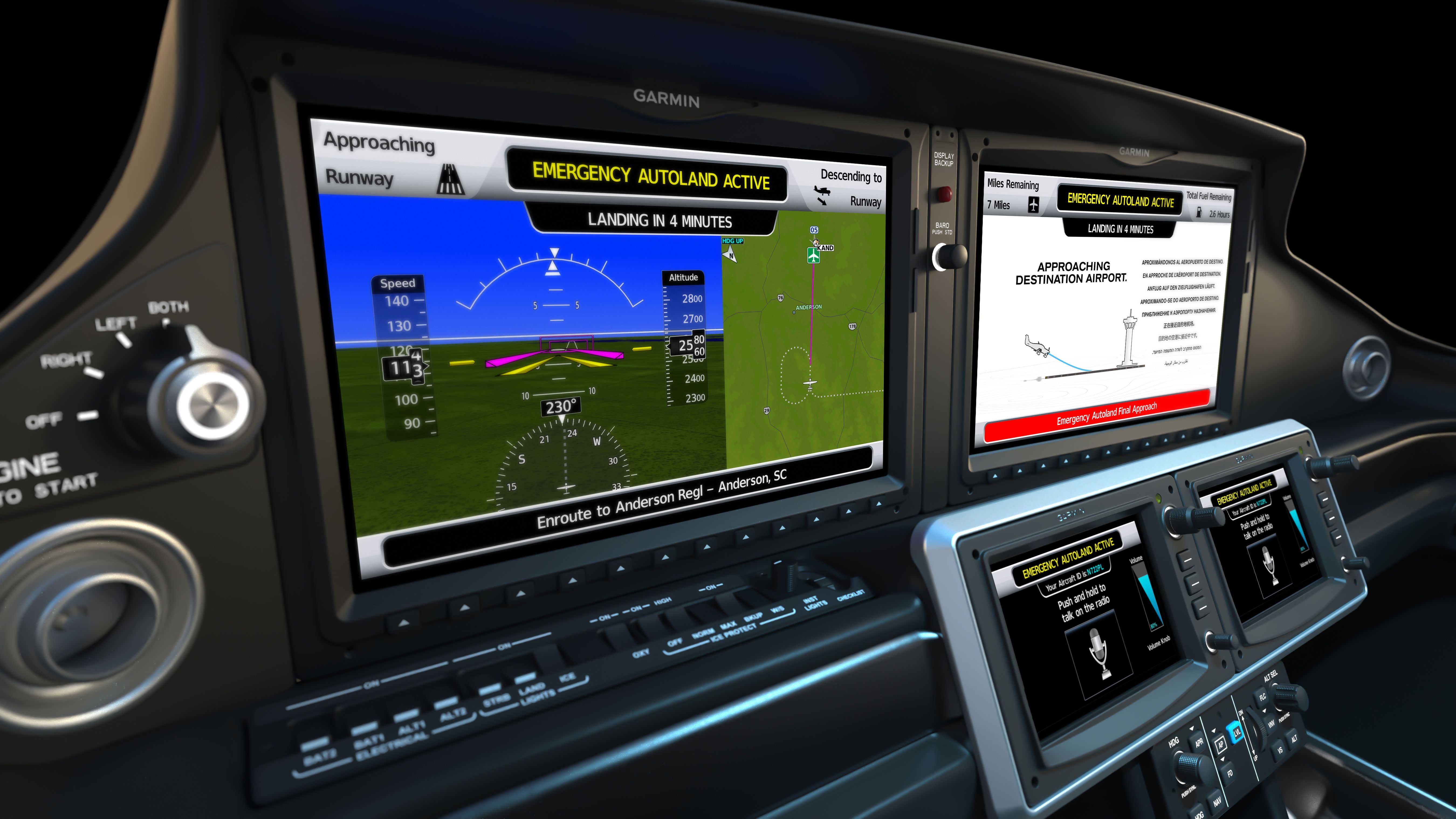Vibrational energy replace wind power in the U.S. – This blade-less wind turbine produces more than 16 solar panels – ECOticias.com El Periódico Verde

Report on Bladeless Wind Turbine Technology and its Alignment with Sustainable Development Goals
1.0 Introduction: Addressing Challenges in Renewable Energy
The expansion of wind power represents a significant step towards achieving global climate targets. However, conventional wind turbines present notable environmental and social challenges that conflict with key Sustainable Development Goals (SDGs). This report examines an innovative bladeless wind turbine technology developed by the Spanish company Bladeless Vortex, analyzing its potential to provide a more sustainable alternative that aligns with multiple SDGs.
1.1 The Limitations of Conventional Wind Turbines
While contributing to SDG 7 (Affordable and Clean Energy) and SDG 13 (Climate Action), traditional turbine designs have adverse impacts, including:
- Impact on SDG 15 (Life on Land): Blade collisions result in significant bird mortality, disrupting local ecosystems and migratory routes.
- Impact on SDG 3 (Good Health and Well-being): The low-frequency noise generated by turbines has been linked to health issues such as insomnia and migraines in nearby communities.
2.0 Technological Innovation: The Bladeless Vortex System
The Bladeless Vortex turbine offers a novel approach to wind energy generation by harnessing aerodynamic vorticity. This innovation directly supports SDG 9 (Industry, Innovation, and Infrastructure) by creating resilient and sustainable energy infrastructure.
2.1 Design and Operational Principles
The technology consists of a vertical, cylindrical mast made of flexible materials. Its operation is based on the following principles:
- Vortex Shedding: As wind passes the cylinder, it creates oscillating vortices, causing the structure to vibrate.
- Energy Conversion: A linear alternator at the base, composed of coils and magnets with no moving parts, converts this kinetic energy from oscillation directly into electricity.
This design eliminates the need for blades, gears, and other complex mechanical components, simplifying manufacturing and maintenance.
3.0 Strategic Alignment with Sustainable Development Goals
The bladeless turbine design offers a holistic solution that advances several SDGs simultaneously, moving beyond a singular focus on clean energy generation.
3.1 Advancing SDG 15 (Life on Land) and SDG 3 (Good Health and Well-being)
The most significant advantage of the bladeless design is its mitigation of the negative externalities of conventional turbines.
- It eliminates the risk of bird collisions, thereby protecting biodiversity and terrestrial ecosystems.
- Its silent operation removes the threat of noise pollution, safeguarding the health and well-being of residential populations.
3.2 Supporting SDG 7 (Affordable and Clean Energy) and SDG 11 (Sustainable Cities and Communities)
The technology promotes energy accessibility and sustainable urban development in several ways:
- Cost-Effectiveness: The simple design reduces manufacturing and maintenance costs, potentially making clean energy more affordable.
- Urban Integration: Its small footprint and silent operation make it ideal for deployment in urban and residential environments where traditional turbines are unsuitable.
- Decentralized Power: The system is well-suited for small-scale, off-grid installations, providing power for lighting and sensors and enhancing community resilience.
4.0 Application, Scalability, and Comparative Analysis
4.1 Current Models and Future Projections
Bladeless Vortex has developed initial models for specific use cases, with plans for scaling the technology:
- Vortex Nano: A small-scale unit designed to power sensors and minor electronic devices.
- Vortex Tacoma: A 2.75-meter model capable of powering LED lighting and small off-grid systems.
The company aims to develop larger models capable of producing 1 kW for residential use and, eventually, larger systems for more complex installations. The technology is positioned as a complementary power source to solar panels, allowing for greater energy generation density on available land.
4.2 Comparison with Traditional Wind Turbines
- Advantages: The Bladeless Vortex system is cheaper to produce, requires less maintenance, has a longer component lifespan, and has a significantly lower environmental and social impact.
- Limitations: In its current development phase, the technology has a lower energy conversion efficiency and a narrower operational wind speed range compared to conventional turbines. Continued innovation is expected to address these factors.
5.0 Conclusion: A New Frontier for Sustainable Infrastructure
The Bladeless Vortex turbine represents a critical innovation in the renewable energy sector. By designing a solution that intrinsically addresses the environmental and social drawbacks of conventional technology, it provides a powerful tool for advancing a broad spectrum of Sustainable Development Goals. Its potential for integration into urban and ecologically sensitive areas makes it a key technology for building the resilient, clean, and sustainable infrastructure required for the future.
1. Which SDGs are addressed or connected to the issues highlighted in the article?
SDG 7: Affordable and Clean Energy
- The article focuses on wind power, a form of clean energy. It discusses the current contribution of wind to America’s electricity supply (10.3%) and introduces an innovative bladeless wind turbine technology aimed at producing electricity without greenhouse gas emissions.
SDG 9: Industry, Innovation, and Infrastructure
- The core of the article is the introduction of a technological innovation, the “Bladless Vortex” turbine. It describes the Spanish company behind the invention, the scientific principles of its operation, and its potential to create more sustainable energy infrastructure.
SDG 11: Sustainable Cities and Communities
- The article addresses the negative impacts of traditional wind turbines on human populations, such as “health problems such as migraines and insomnia” due to low-frequency noise. The new bladeless technology is presented as a solution that could be installed in environments unsuitable for traditional turbines, potentially closer to communities, without causing these health issues.
SDG 13: Climate Action
- The article explicitly frames wind turbines as “one of the best technologies for producing electricity without greenhouse gas emissions,” which is a primary strategy for mitigating climate change.
SDG 15: Life on Land
- A significant portion of the article is dedicated to the environmental impact of traditional wind turbines on wildlife, specifically bird populations. It mentions that “Hundreds of these animals are killed by collisions with the huge blades” and that turbines can interfere with migratory routes. The bladeless design is presented as a direct solution to this problem, thereby protecting terrestrial ecosystems and biodiversity.
2. What specific targets under those SDGs can be identified based on the article’s content?
SDG 7: Affordable and Clean Energy
- Target 7.2: By 2030, increase substantially the share of renewable energy in the global energy mix. The article states that wind power accounts for 10.3% of America’s electricity and “continues to grow year on year,” directly relating to increasing the renewable energy share.
- Target 7.a: By 2030, enhance international cooperation to facilitate access to clean energy research and technology… and promote investment in energy infrastructure and clean energy technology. The article discusses a Spanish company’s innovation (“Iberian-made bladeless generator”) and its potential deployment in America, which exemplifies the promotion and adoption of new clean energy technology developed through international efforts.
SDG 9: Industry, Innovation, and Infrastructure
- Target 9.4: By 2030, upgrade infrastructure and retrofit industries to make them sustainable, with increased resource-use efficiency and greater adoption of clean and environmentally sound technologies. The Bladeless Vortex is described as a “clean and environmentally sound” technology that is “simpler and cheaper to produce” and requires “less maintenance,” representing an upgrade to existing energy infrastructure.
- Target 9.5: Enhance scientific research, upgrade the technological capabilities of industrial sectors… encouraging innovation. The development of the bladeless turbine, based on the phenomenon of ‘wind-induced vorticity’, is a clear example of enhancing scientific research and encouraging innovation in the energy sector.
SDG 11: Sustainable Cities and Communities
- Target 11.6: By 2030, reduce the adverse per capita environmental impact of cities. The bladeless turbine’s design eliminates the “low-frequency noise” produced by traditional turbines, which is cited as a cause of health problems, thereby reducing a negative environmental impact on nearby populations.
SDG 13: Climate Action
- Target 13.2: Integrate climate change measures into national policies, strategies and planning. The article mentions the “support that our country [America] offers to this type of technology,” indicating the integration of renewable energy promotion into national strategy to combat climate change.
SDG 15: Life on Land
- Target 15.5: Take urgent and significant action to reduce the degradation of natural habitats, halt the loss of biodiversity and… protect and prevent the extinction of threatened species. The bladeless turbine is a direct response to the threat traditional turbines pose to bird populations, aiming to halt this specific cause of biodiversity loss.
3. Are there any indicators mentioned or implied in the article that can be used to measure progress towards the identified targets?
SDG 7: Affordable and Clean Energy
- Indicator 7.2.1 (Renewable energy share in the total final energy consumption): The article provides a specific data point for this indicator, stating that wind power accounts for “10.3% of America’s electricity.”
SDG 9: Industry, Innovation, and Infrastructure
- Implied Indicator for Target 9.4: Reduction in maintenance costs and material usage for energy infrastructure. The article implies this by stating the bladeless turbine “requires less maintenance, greatly increasing the lifetime of its components” and is “simpler and cheaper to produce.”
SDG 11: Sustainable Cities and Communities
- Implied Indicator for Target 11.6: Reduction in noise pollution from energy generation facilities. The article implies this by highlighting the elimination of “low-frequency noise” as a key benefit of the new technology.
SDG 13: Climate Action
- Implied Indicator for Target 13.2: Amount of electricity generated from zero-emission sources. The article’s central theme is about a technology for “producing electricity without greenhouse gas emissions.”
SDG 15: Life on Land
- Implied Indicator for Target 15.5: Reduction in bird mortality caused by wind energy infrastructure. The article directly implies this by presenting the bladeless design as a solution to the problem of “Hundreds of these animals are killed by collisions with the huge blades.”
4. SDGs, Targets and Indicators Analysis
| SDGs | Targets | Indicators |
|---|---|---|
| SDG 7: Affordable and Clean Energy | 7.2: Increase substantially the share of renewable energy.
7.a: Enhance international cooperation to facilitate access to clean energy research and technology. |
7.2.1: Renewable energy share in total electricity generation (stated as 10.3% from wind in America). |
| SDG 9: Industry, Innovation, and Infrastructure | 9.4: Upgrade infrastructure and retrofit industries to make them sustainable.
9.5: Enhance scientific research and upgrade technological capabilities. |
Implied: Reduction in maintenance costs and material usage for energy infrastructure. Adoption of new, environmentally sound technologies (Bladeless Vortex). |
| SDG 11: Sustainable Cities and Communities | 11.6: Reduce the adverse per capita environmental impact of cities. | Implied: Reduction in noise pollution levels near energy installations. |
| SDG 13: Climate Action | 13.2: Integrate climate change measures into national policies, strategies and planning. | Implied: Amount of electricity produced without greenhouse gas emissions. |
| SDG 15: Life on Land | 15.5: Take urgent and significant action to reduce the degradation of natural habitats and halt the loss of biodiversity. | Implied: Reduction in bird mortality rates from wind energy infrastructure. |
Source: ecoticias.com

What is Your Reaction?
 Like
0
Like
0
 Dislike
0
Dislike
0
 Love
0
Love
0
 Funny
0
Funny
0
 Angry
0
Angry
0
 Sad
0
Sad
0
 Wow
0
Wow
0









































































